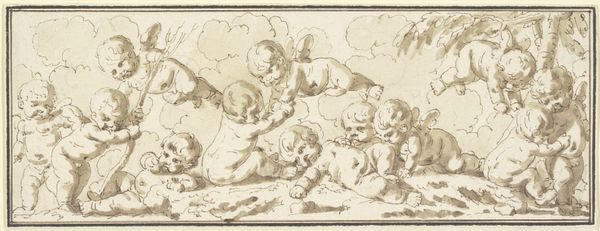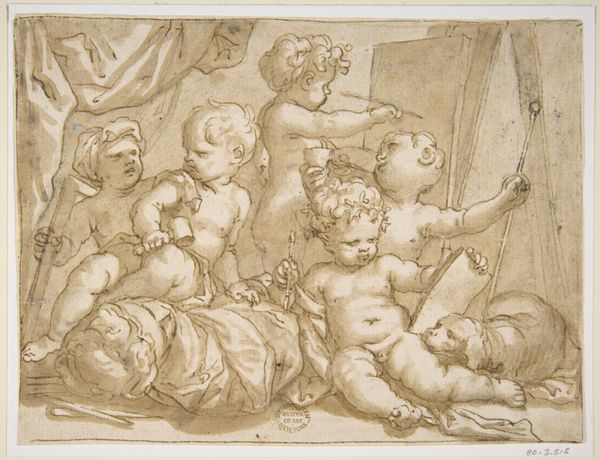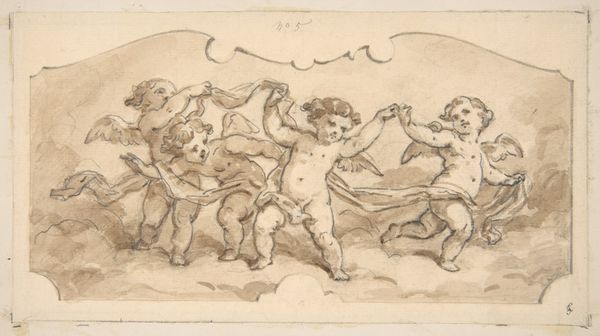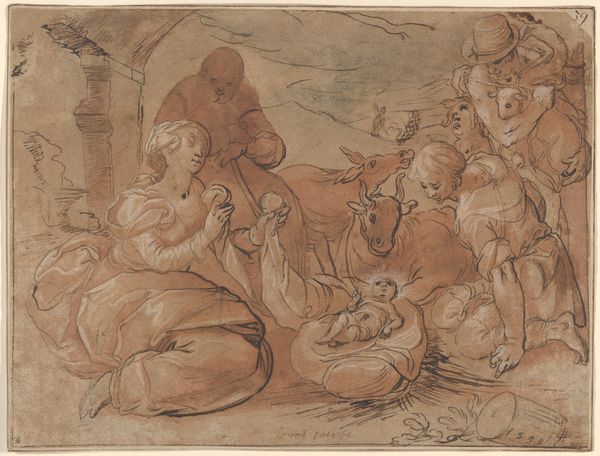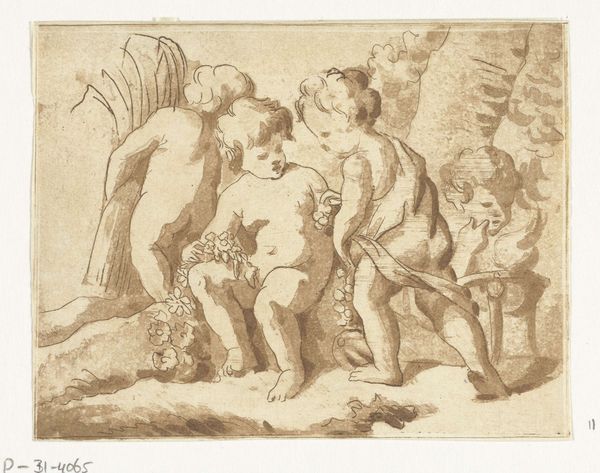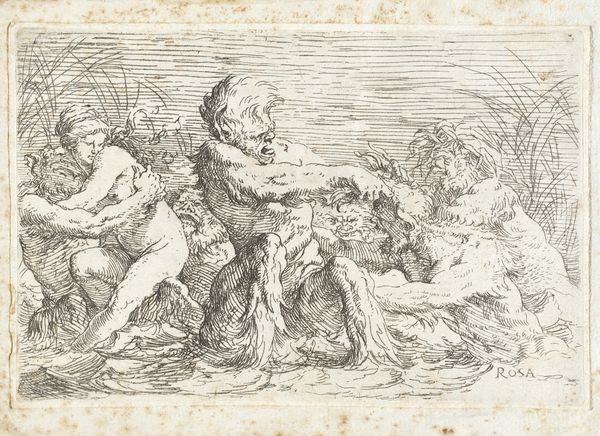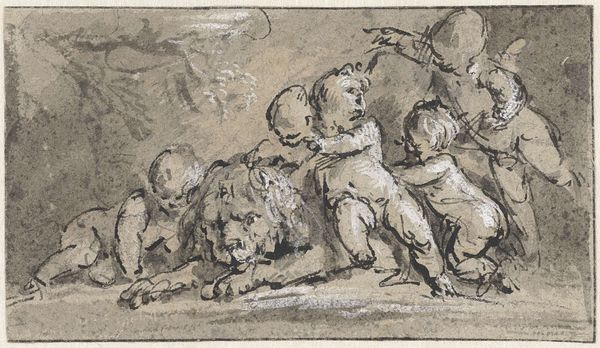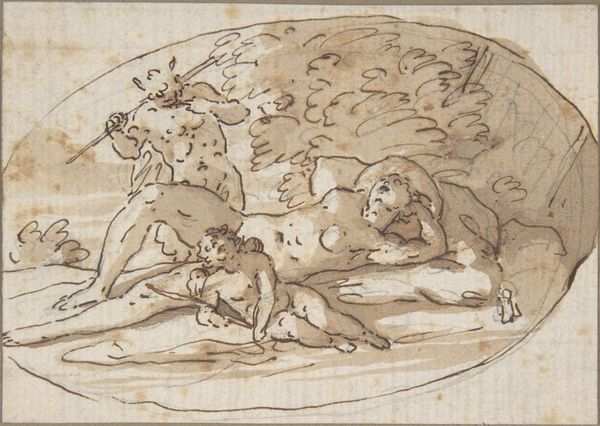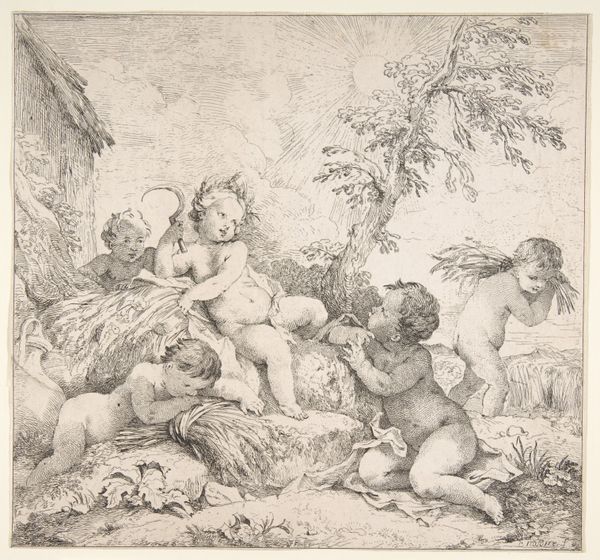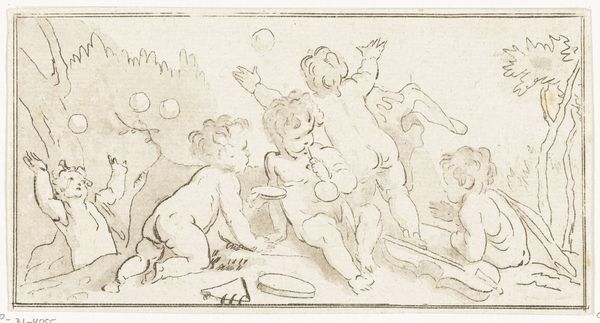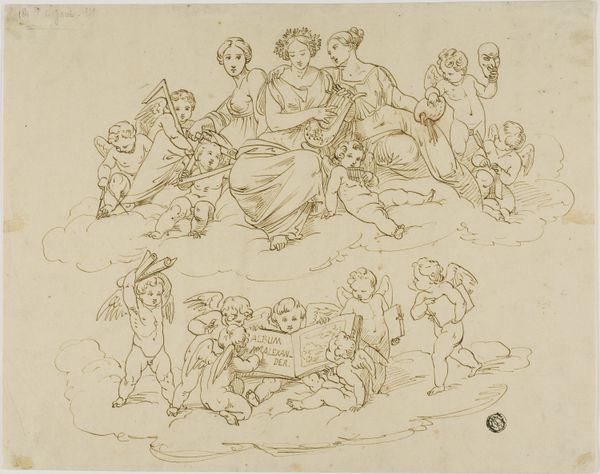
Dimensions: image: 4 3/4 x 9 7/16 in. (12.1 x 24 cm)
Copyright: Public Domain
Editor: So, this is "Putti at Play," an ink and watercolor drawing, created sometime between 1850 and 1900. The artist is Jules-Edmond-Charles Lachaise. The monochromatic sepia tone really makes you focus on the subject matter, and, on the whole, it evokes a whimsical and joyful atmosphere, doesn't it? How would you interpret this work through a formalist lens? Curator: Focusing solely on the formal elements, observe the artist’s handling of line and wash. Notice how the dynamism of the putti is rendered through sweeping lines and energetic composition. The composition, contained within a defined border, plays with the contrast of light and shadow, creating a sense of depth despite the limited tonal range. How does the distribution of weight and the arrangement of forms affect your perception? Editor: I see what you mean; there’s a balance in how they’re arranged. Some are more detailed than others, and this contrast draws my attention. So you’re focusing on how the composition makes meaning through line, contrast, and the interplay between distinct and less-defined elements. Curator: Precisely. The relationship between form and content here isn’t about what the putti *represent*, but *how* the visual elements – line, tone, composition – interact to create an experience for the viewer. What strikes you as most significant in this interaction? Editor: The movement captured through line and the different applications of ink really emphasize a sense of playfulness beyond just the subject matter. It shows an energy even through the still image, doesn't it? Curator: Exactly! The formal aspects work to generate dynamism that goes far beyond its ostensible topic. Considering its technical and compositional structures opens up pathways of feeling for us, indeed. Editor: Well, I have to say, thinking about just line and contrast allows a totally new way to view even seemingly familiar concepts within artworks. Curator: Yes. Deconstructing the piece to its formal elements and reassembling the concepts offers new insight, beyond cultural and historical concerns.
Comments
No comments
Be the first to comment and join the conversation on the ultimate creative platform.

